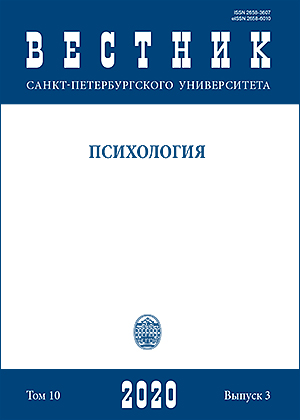Sensory-perceptual processing in children with autism spectrum disorders based on the study of visual and haptic perception
DOI:
https://doi.org/10.21638/spbu16.2020.304Abstract
Few existing experimental studies of haptic perception and object exploration in autism address perceptual actions in children with ASD. Haptic perception plays an important role in the formation of perceptual processes in early childhood. Stereotypical behaviour in children with ASD and observed sensory abnormalities in different modalities point to the need to study haptic perception as well. The purpose of this study was to examine haptic perception in children with ASD and their peers in comparison to their visual perception. 16 typically developing and 18 children with ASD aged from 6 to 15 years of age participated in this study. The experiment took place in the context of a game in which children were asked to touch an object, name it, and draw what they think it is, then the same stimuli were presented in the visual modality. To register hand movements in a contactless manner for the first time, “Leap Motion” was implemented. The results indicate that children with ASD have underdeveloped perceptual actions in the process of haptic perception of the stimuli, which manifested itself in a lack of contour-following, longer fixations on local components of the figure, which was also evident in the names and drawings of the stimuli given by children with ASD. The drawings and names that children with ASD gave to perceived stimuli often included geometric shapes. Such outcomes provide more proof of general deficits in perception in children with autism.
Keywords:
autistic spectrum disorder, haptic perception, sensory-perceptual processing, motion capture, visual perception, childhood autism
Downloads
References
org/10.1007/s10803-005-0039-0.
References
Embedded in Noise. Voprosy psihologii, 2010, no. 5, pp. 114–124. (In Russian)
12.024.
Downloads
Published
How to Cite
Issue
Section
License
Articles of "Vestnik of Saint Petersburg University. Psychology" are open access distributed under the terms of the License Agreement with Saint Petersburg State University, which permits to the authors unrestricted distribution and self-archiving free of charge.




